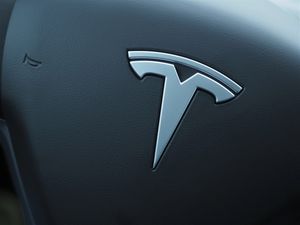
Dallas, TX – October 22, 2025 – Texas Instruments (NASDAQ: TXN), a foundational player in the global semiconductor industry, is facing significant headwinds, as evidenced by its volatile stock performance and a cautious outlook for the fourth quarter of 2025. The company's recent earnings report, released on October 21, 2025, revealed a robust third quarter but was overshadowed by weaker-than-expected guidance, triggering a market selloff. This development highlights a growing "bifurcated reality" within the semiconductor sector: explosive demand for advanced AI-specific chips contrasting with a slower, more deliberate recovery in traditional analog and embedded processing segments, where TI holds a dominant position.
The immediate significance of TI's performance extends beyond its own balance sheet, offering a crucial barometer for the broader health of industrial and automotive electronics, and indirectly influencing the foundational infrastructure supporting the burgeoning AI and machine learning ecosystem. As the industry grapples with inventory corrections, geopolitical tensions, and a cautious global economy, TI's trajectory provides valuable insights into the complex dynamics shaping technological advancement in late 2025.
Unpacking the Volatility: A Deeper Dive into TI's Performance and Market Dynamics
Texas Instruments reported impressive third-quarter 2025 revenues of $4.74 billion, surpassing analyst estimates and marking a 14% year-over-year increase, with growth spanning all end markets. However, the market's reaction was swift and negative, with TXN's stock falling between 6.82% and 8% in after-hours and pre-market trading. The catalyst for this downturn was the company's Q4 2025 guidance, projecting revenue between $4.22 billion and $4.58 billion and earnings per share (EPS) of $1.13 to $1.39. These figures fell short of Wall Street's consensus, which had anticipated higher revenue (around $4.51-$4.52 billion) and EPS ($1.40-$1.41).
This subdued outlook stems from several intertwined factors. CEO Haviv Ilan noted that while recovery in key markets like industrial, automotive, and data center-related enterprise systems is ongoing, it's proceeding "at a slower pace than prior upturns." This contrasts sharply with the "AI Supercycle" driving explosive demand for logic and memory segments critical for advanced AI chips, which are projected to see significant growth in 2025 (23.9% and 11.7% respectively). TI's core analog and embedded processing products, while essential, operate in a segment facing a more modest recovery. The automotive sector, for instance, experienced a decline in semiconductor demand in Q1 2025 due to excess inventory, with a gradual recovery expected in the latter half of the year. Similarly, industrial and IoT segments have seen muted performance as customers work through surplus stock.
Compounding these demand shifts are persistent inventory adjustments, particularly an lingering oversupply of analog chips. While TI's management believes customer inventory depletion is largely complete, the company has had to reduce factory utilization to manage its own inventory levels, directly impacting gross margins. Macroeconomic factors further complicate the picture. Ongoing U.S.-China trade tensions, including potential 100% tariffs on imported semiconductors and export restrictions, introduce significant uncertainty. China accounts for approximately 19% of TI's total sales, making it particularly vulnerable to these geopolitical shifts. Additionally, slower global economic growth and high U.S. interest rates are dampening investment in new AI initiatives, particularly for startups and smaller enterprises, even as tech giants continue their aggressive push into AI. Adding to the pressure, TI is in the midst of a multi-year, multi-billion-dollar investment cycle to expand its U.S. manufacturing capacity and transition to a 300mm fabrication footprint. While a strategic long-term move for cost efficiency, these substantial capital expenditures lead to rising depreciation costs and reduced factory utilization in the short term, further compressing gross margins.
Ripples Across the AI and Tech Landscape
While Texas Instruments is not a direct competitor to high-end AI chip designers like NVIDIA (NASDAQ: NVDA), its foundational analog and embedded processing chips are indispensable components for the broader AI and machine learning hardware ecosystem. TI's power management and sensing technologies are critical for next-generation AI data centers, which are consuming unprecedented amounts of power. For example, in May 2025, TI announced a collaboration with NVIDIA to develop 800V high-voltage DC power distribution systems, essential for managing the escalating power demands of AI data centers, which are projected to exceed 1MW per rack. The rapid expansion of data centers, particularly in regions like Texas, presents a significant growth opportunity for TI, driven by the insatiable demand for AI and cloud infrastructure.
Beyond the data center, Texas Instruments plays a pivotal role in edge AI applications. The company develops dedicated edge AI accelerators, neural processing units (NPU), and specialized software for embedded systems. These technologies are crucial for enabling AI capabilities in perception, real-time monitoring and control, and audio AI across diverse sectors, including automotive and industrial settings. As AI permeates various industries, the demand for high-performance, low-power processors capable of handling complex AI computations at the edge remains robust. TI, with its deep expertise in these areas, provides the underlying semiconductor technologies that make many of these advanced AI functionalities possible.
However, a slower recovery in traditional industrial and automotive sectors, where TI has a strong market presence, could indirectly impact the cost and availability of broader hardware components. This could, in turn, influence the development and deployment of certain AI/ML hardware, particularly for edge devices and specialized industrial AI applications that rely heavily on TI's product portfolio. The company's strategic investments in manufacturing capacity, while pressuring short-term margins, are aimed at securing a long-term competitive advantage by improving cost structure and supply chain resilience, which will ultimately benefit the AI ecosystem by ensuring a stable supply of crucial components.
Broader Implications for the AI Landscape and Beyond
Texas Instruments' current performance offers a poignant snapshot of the broader AI landscape and the complex trends shaping the semiconductor industry. It underscores the "bifurcated reality" where an "AI Supercycle" is driving unprecedented growth in specialized AI hardware, while other foundational segments experience a more measured, and sometimes challenging, recovery. This divergence impacts the entire supply chain, from raw materials to end-user applications. The robust demand for AI chips is fueling innovation and investment in advanced logic and memory, pushing the boundaries of what's possible in machine learning and large language models. Simultaneously, the cautious outlook for traditional components highlights the uneven distribution of this AI-driven prosperity across the entire tech ecosystem.
The challenges faced by TI, such as geopolitical tensions and macroeconomic slowdowns, are not isolated but reflect systemic risks that could impact the pace of AI adoption and development globally. Tariffs and export restrictions, particularly between the U.S. and China, threaten to disrupt supply chains, increase costs, and potentially fragment technological development. The slower global economic growth and high interest rates could curtail investment in new AI initiatives, particularly for startups and smaller enterprises, even as tech giants continue their aggressive push into AI. Furthermore, the semiconductor and AI industries face an acute and widening shortage of skilled professionals. This talent gap could impede the pace of innovation and development in AI/ML hardware across the entire ecosystem, regardless of specific company performance.
Compared to previous AI milestones, where breakthroughs often relied on incremental improvements in general-purpose computing, the current era demands highly specialized hardware. TI's situation reminds us that while the spotlight often shines on the cutting-edge AI processors, the underlying power management, sensing, and embedded processing components are equally vital, forming the bedrock upon which the entire AI edifice is built. Any instability in these foundational layers can have ripple effects throughout the entire technology stack.
Future Developments and Expert Outlook
Looking ahead, Texas Instruments is expected to continue its aggressive, multi-year investment cycle in U.S. manufacturing capacity, particularly its transition to 300mm fabrication. This strategic move, while costly in the near term due to rising depreciation and lower factory utilization, is anticipated to yield significant long-term benefits in cost structure and efficiency, solidifying TI's position as a reliable supplier of essential components for the AI age. The company's focus on power management solutions for high-density AI data centers and its ongoing development of edge AI accelerators and NPUs will remain key areas of innovation.
Experts predict a gradual recovery in the automotive and industrial sectors, which will eventually bolster demand for TI's analog and embedded processing products. However, the pace of this recovery will be heavily influenced by macroeconomic conditions and the resolution of geopolitical tensions. Challenges such as managing inventory levels, navigating a complex global trade environment, and attracting and retaining top engineering talent will be crucial for TI's sustained success. The industry will also be watching closely for further collaborations between TI and leading AI chip developers like NVIDIA, as the demand for highly efficient power delivery and integrated solutions for AI infrastructure continues to surge.
In the near term, analysts will scrutinize TI's Q4 2025 actual results and subsequent guidance for early 2026 for signs of stabilization or further softening. The broader semiconductor market will continue to exhibit its bifurcated nature, with the AI Supercycle driving specific segments while others navigate a more traditional cyclical recovery.
A Crucial Juncture for Foundational AI Enablers
Texas Instruments' recent performance and outlook underscore a critical juncture for foundational AI enablers within the semiconductor industry. While the headlines often focus on the staggering advancements in AI models and the raw power of high-end AI processors, the underlying components that manage power, process embedded data, and enable sensing are equally indispensable. TI's current volatility serves as a reminder that even as the AI revolution accelerates, the broader semiconductor ecosystem faces complex challenges, including uneven demand, inventory corrections, and geopolitical risks.
The company's strategic investments in manufacturing capacity and its pivotal role in both data center power management and edge AI position it as an essential, albeit indirect, contributor to the future of artificial intelligence. The long-term impact of these developments will hinge on TI's ability to navigate short-term headwinds while continuing to innovate in areas critical to AI infrastructure. What to watch for in the coming weeks and months includes any shifts in global trade policies, signs of accelerated recovery in the automotive and industrial sectors, and further announcements regarding TI's collaborations in the AI hardware space. The health of companies like Texas Instruments is a vital indicator of the overall resilience and readiness of the global tech supply chain to support the ever-increasing demands of the AI era.
This content is intended for informational purposes only and represents analysis of current AI developments.
TokenRing AI delivers enterprise-grade solutions for multi-agent AI workflow orchestration, AI-powered development tools, and seamless remote collaboration platforms.
For more information, visit https://www.tokenring.ai/.






